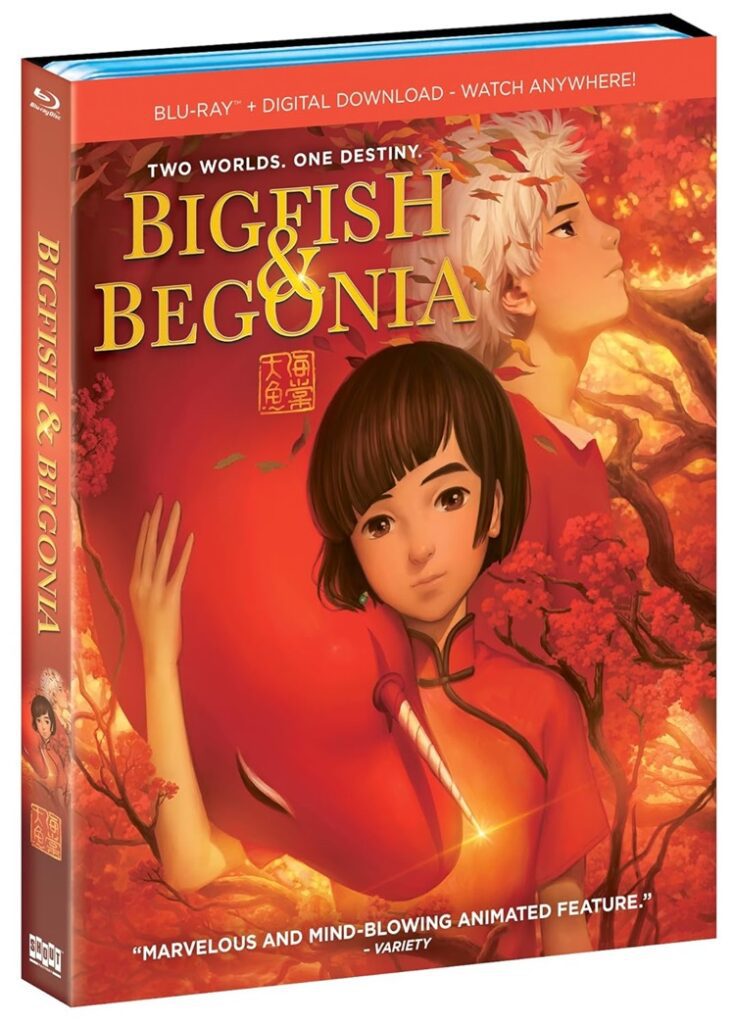
It took 12 years for directors Xuan Liang and Chun Zhang to bring their animated feature film, Big Fish & Begonia, to the big screen. For the most part, the long wait was well worth it. It’s a gorgeously animated feature that seems heavily inspired by the likes of filmmakers such as Hayao Miyazaki, but it doesn’t borrow too much from his work to seem like a complete imitation.
On the negative side, though, the story is bogged down heavily by exposition and a muddled storyline that tries to incorporate as much about Chinese mythology as it can while weaving together a cohesive tale. At times, it feels a little too cluttered, and some of the characters aren’t quite as interesting as others. But the visual aesthetics are tremendous to behold, and while the story isn’t perfect, there are some moments that can connect to the viewer and trigger an emotional nerve here and there.
Chinese mythology tells of a world that controls the seasons. In this world, when the girls turn 16, they are given the rite of passage to go explore Earth via transforming into a red dolphin. There’s a beautiful moment early on, showing the dolphins flying in the air as they transfer to Earth. It’s a mystical scene, one that will stay in the viewer’s mindset long after the movie is over.
Our main character is a young girl named Chun, who wants to do more than just take a gander at this world via the ocean. She wants to live it and get a full experience. When her time comes, she travels with others to Earth. But once she gets to Earth, she finds out that it is full of danger at every corner. When she gets stuck in a fishing net, she is rescued by a human boy who sacrifices his life. Inspired by his bravery, Chun finds a way to resurrect the boy as a minnow in an effort to bring him back to life in the human world. She then makes it her mission to raise him to full adult status (a narwhal) before he is able to return to Earth in his human form.
I was reminded a lot of Miyazaki’s Spirited Away as I watched Big Fish & Begonia. Both tackle big questions and are gorgeously animated, and our leads encounter some interesting characters on their respective journeys. But I didn’t fully connect to the story of Big Fish & Begonia, and there are moments where it seems to drag on as it tries to wrap everything up in the third act. For a while, though, I felt I was being swept away by its richly detailed visuals, and I thought I was in for a real treat. However, the story bounces around a few too many times and doesn’t quite make a complete connection. Not that I was not interested in seeing where it ended up, but it seemed there was a lot the filmmakers tried to cram in with the limited time they had, and a lot of it didn’t seem to flow together.
Despite its issues, Big Fish & Begonia is still one of the most beautifully animated films I’ve seen in years. The visuals alone make it worth recommending, and there was at least one moment in the messy third act where I felt a strong, emotional connection to the characters. For those reasons, I can forgive it for its flaws, and I’d be willing to dive into it again just to experience its visual beauty.
Big Fish & Begonia opens in New York, San Francisco, and Los Angeles on April 6.